Generation Strategy
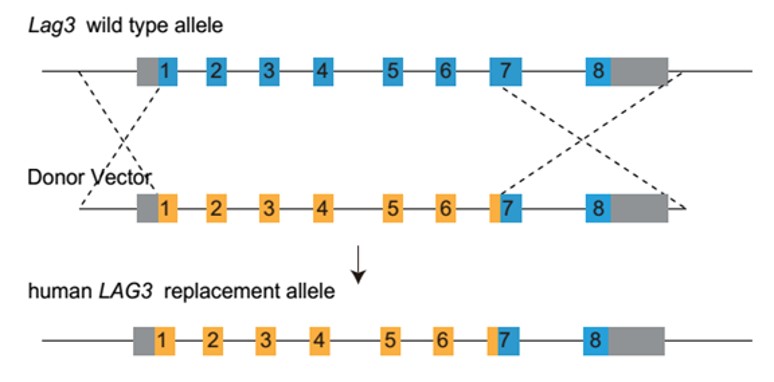
Figure 1. Strategy for generating the humanized LAG3 mice. Using homologous recombination, the sequence for the entire extracellular domain of endogenous mouse Lag3 gene was replaced with the human LAG3 sequence to express a humanized chimeric LAG3 protein.
Flow Cytometric Analysis to Detect the Expression of LAG3 in the Humanized LAG3 Mouse Model After Activation of T Lymphocytes
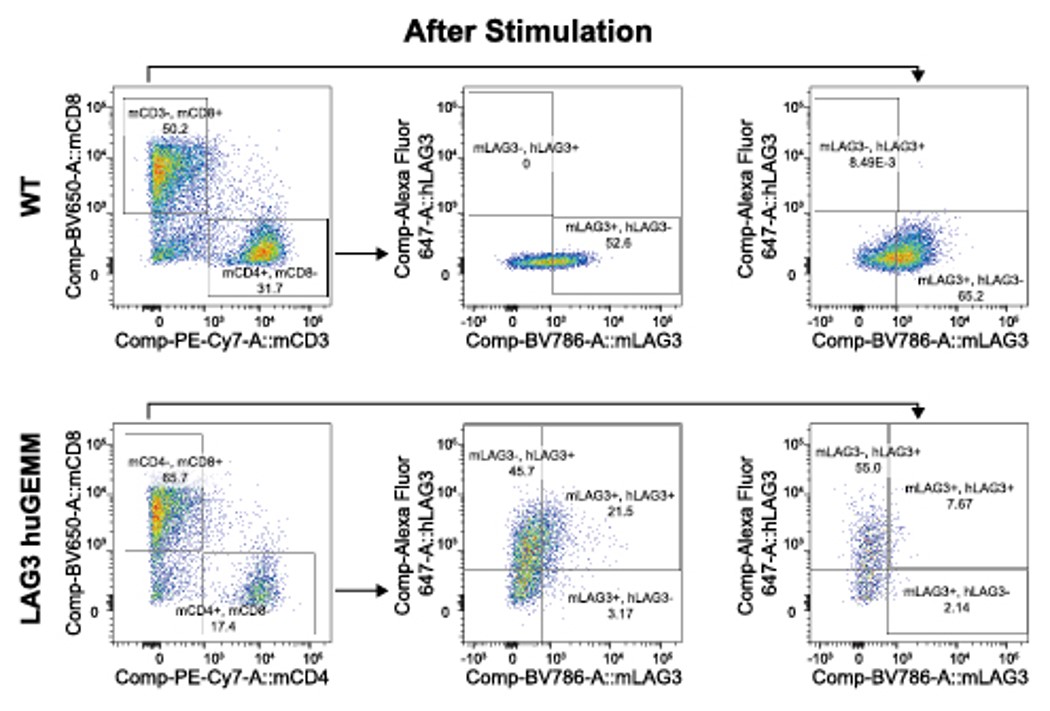
Figure 2. Expression of LAG3 in the activated spleen lymphocytes of humanized LAG3 mice is detected by FACS. Stimulated spleen lymphocytes of homozygous humanized LAG3 mice. The results showed that the active expression of humanized LAG3 can be detected in both activated CD4+ and CD8+ T lymphocytes collected from homozygous humanized LAG3 mice. (Data in partnership with collaborators).
Expression of LAG3 in the Homozygous Humanized LAG3 Mouse Model
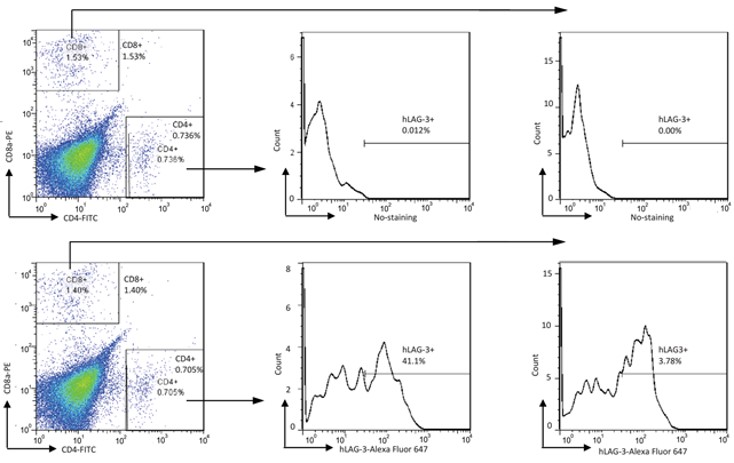
Figure 3. Flow cytometry analysis of tumor infiltrating lymphocytes (TILs) after humanized LAG3 mice were inoculated with MC38 tumor cells (Data in partnership with collaborators).
FACS detection of LAG3 expression in tumor infiltrating lymphocytes collected from humanized LAG3 mice. Homozygous humanized LAG3 mice were inoculated with MC38 colon cancer cells. After the tumors grew to 1000 mm3, tumor infiltrating lymphocytes were isolated and detected by FACS to measure the expression of humanized LAG3 in CD4+ and CD8+ T cells. The results showed that the active expression of humanized LAG3 was detected in the tumor infiltrating lymphocytes collected from humanized LAG3 mice. In particular, 41.1% of CD4+ positive cells were also positive for humanized LAG3.
In Vivo Validation of Anti-tumor Efficacy in a MC38 Tumor-bearing Model of Humanized LAG3 Mouse
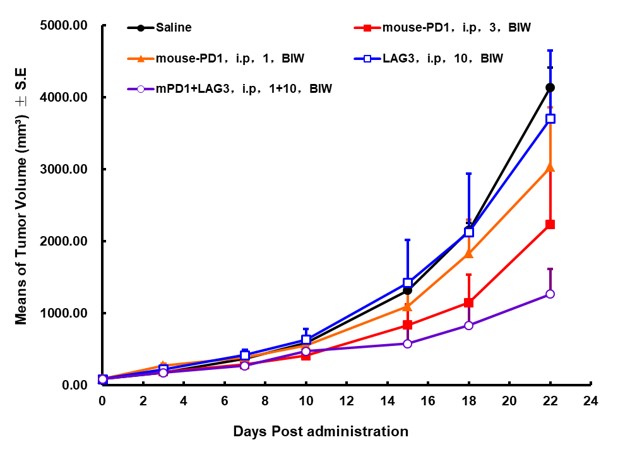
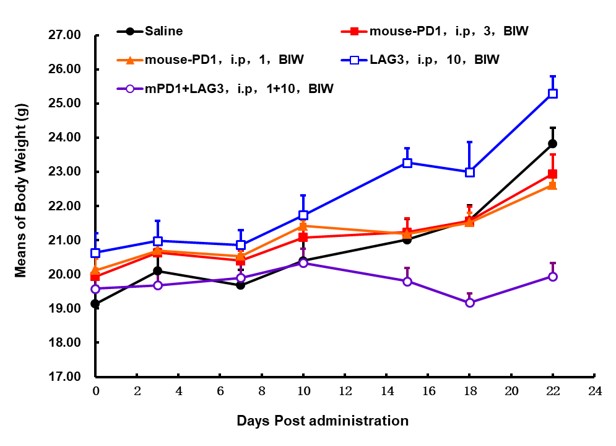
Figure 4. In vivo validation of anti-tumor efficacy in a MC38 tumor-bearing model of humanized LAG3 mouse. Homozygous humanized LAG3 mice were inoculated with MC38 colon cancer cell lines. After the tumors grew to 50 mm3, the animals were randomly assigned into different groups (n=5). The results showed that the anti-tumor effect was not observed when the antibody targeting human LAG3 was administered alone. However, a significant anti-tumor effect was observed when the antibody targeting human LAG3 was administered together with the anti-PD1 antibody.
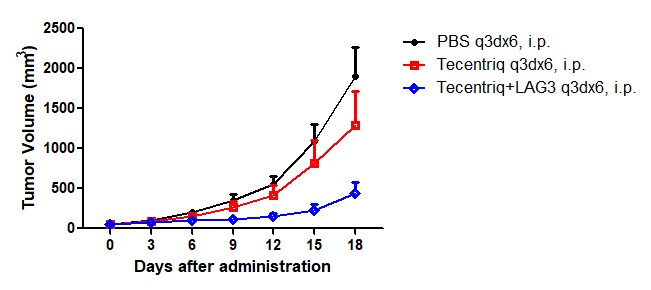
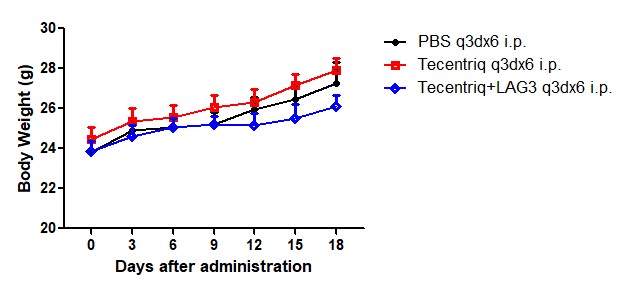
Figure 5. In vivo validation of anti-tumor efficacy in a MC38 tumor bearing model of humanized LAG3 mouse. Homozygous humanized LAG3 mice were inoculated with MC38 colon cancer cell lines. After the tumors grew to 70-80 mm3, the animals were randomly assigned into different groups (n=8). The results showed a significant anti-tumor effect was observed when the antibody targeting human LAG3 was administered together with Tencentriq.


